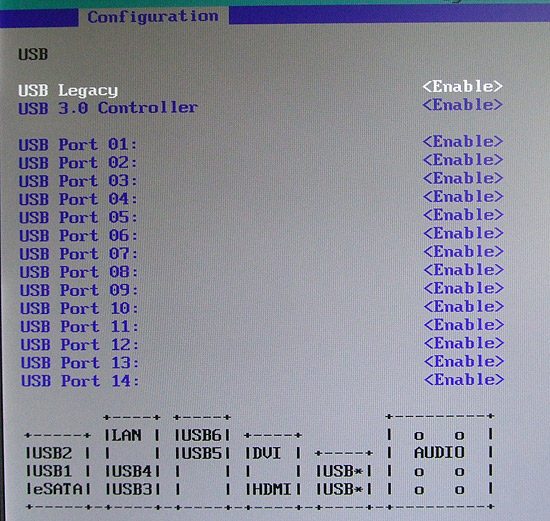Inside the BIOS:
Intel provides an exhaustive set of BIOS options with its DH67BL
motherboard that allow users to control how the motherboard
communicates with peripherals. Unfortunately, overclocking options are completely absent from this UEFI BIOS. If
you wish to overclock an LGA1155 processor, an Intel P67 or Z68
motherboard is what's required.

In the video options we can change the amount of memory
assigned to the IGP, from 128MB and 256MB.

Every single USB port can be individually turned on, or
off. I have no idea why you would ever need this feature... do
you?
Processor options are pretty much limited to whether
Intel Turbo Boost is enabled, or not. There are some most power controls, though
without OC options we fail to see the exact application.

CPU idle state can be set between a couple different power
states, depending on how much electricity you wish the PC to consume when it's
left alone. Intel's motherboards have always been conservative when it
comes to tweakable options for overclocking. It's simply not what these types of
motherboards are designed for.

The most important memory settings
can be set to automatic, manual or SPD modes to determine the proper timings for
system memory.

The Intel DH67BL has a Performance menu page, but this
is mainly dedicated towards hardware monitoring. The graphics multiplier can
be adjusted - PCSTATS saw no significant benefit from doing so.
Total system power draw and Test system specs are up
next, then it's onto desktop system benchmarks and IGP-vs-IGP benchmarks!
